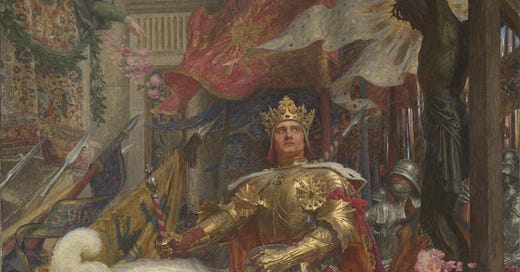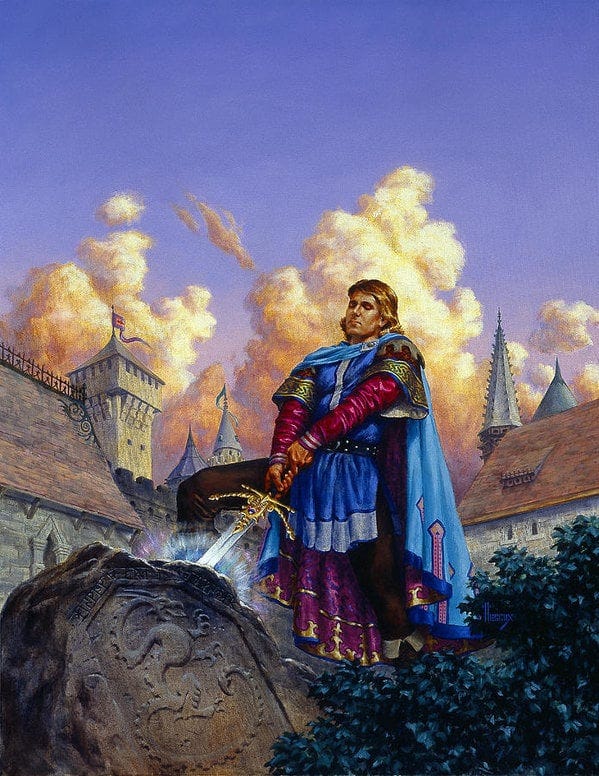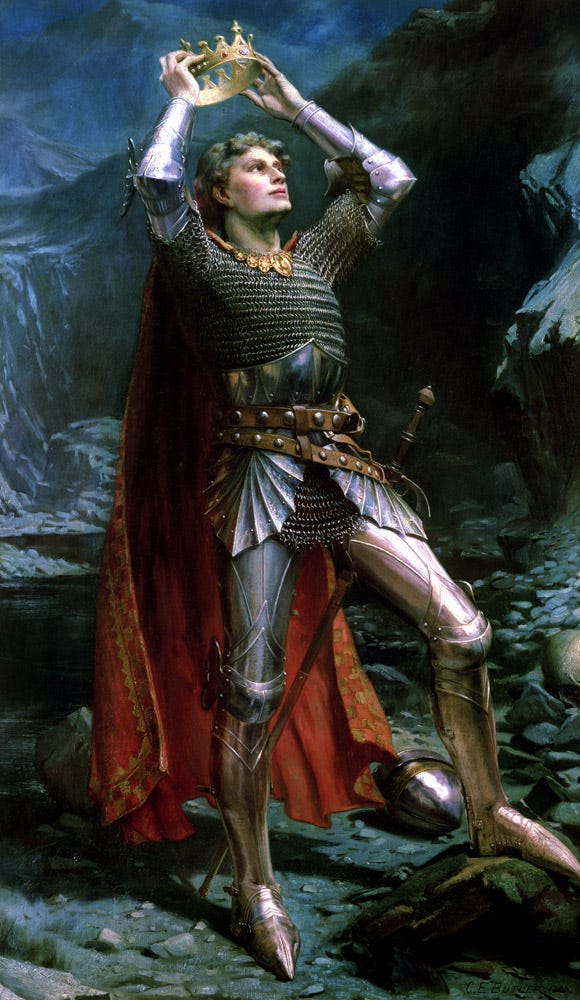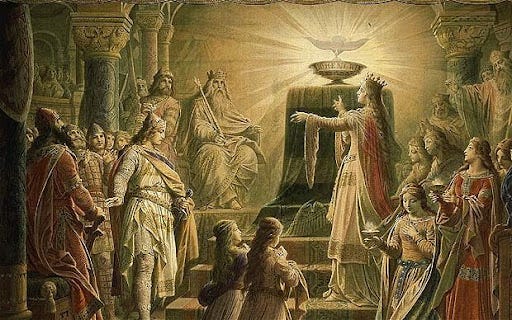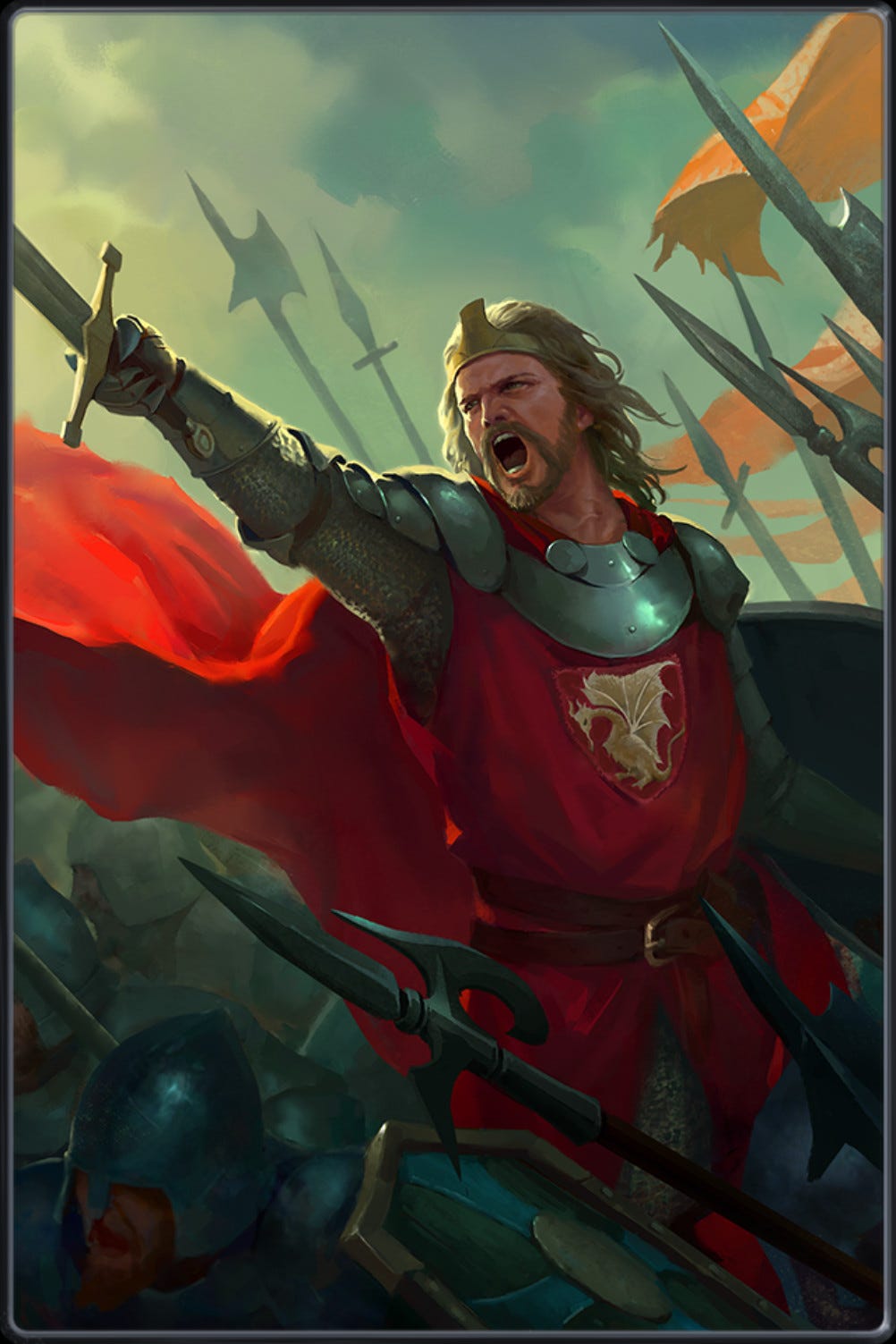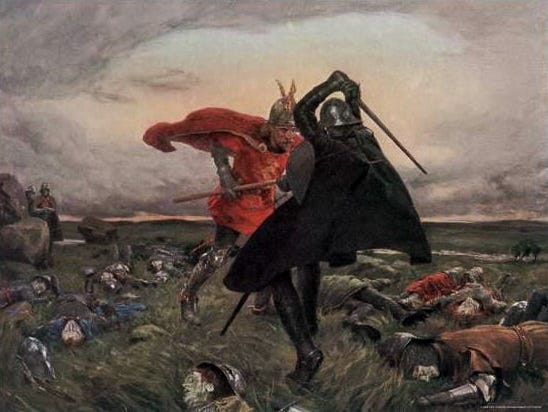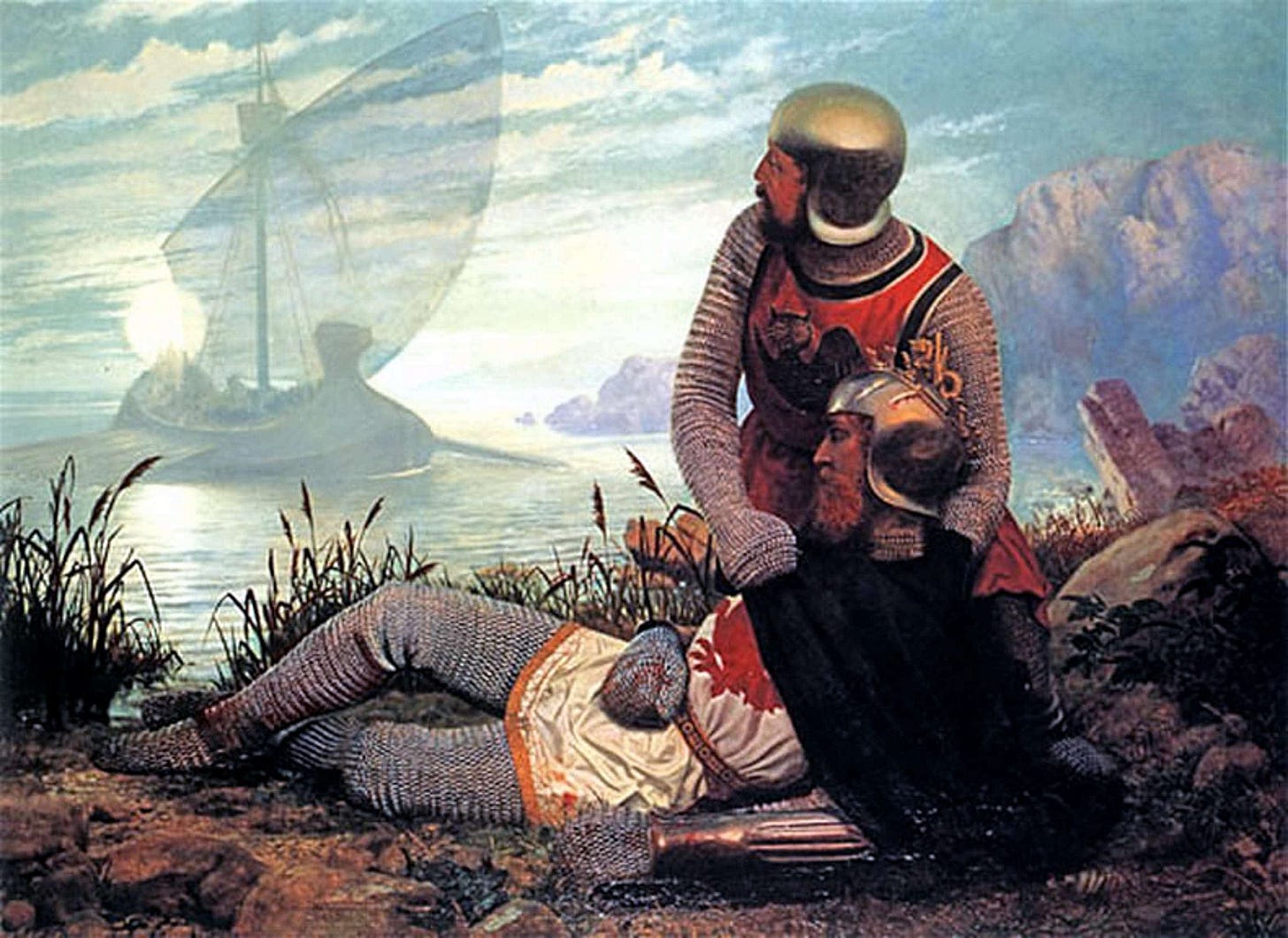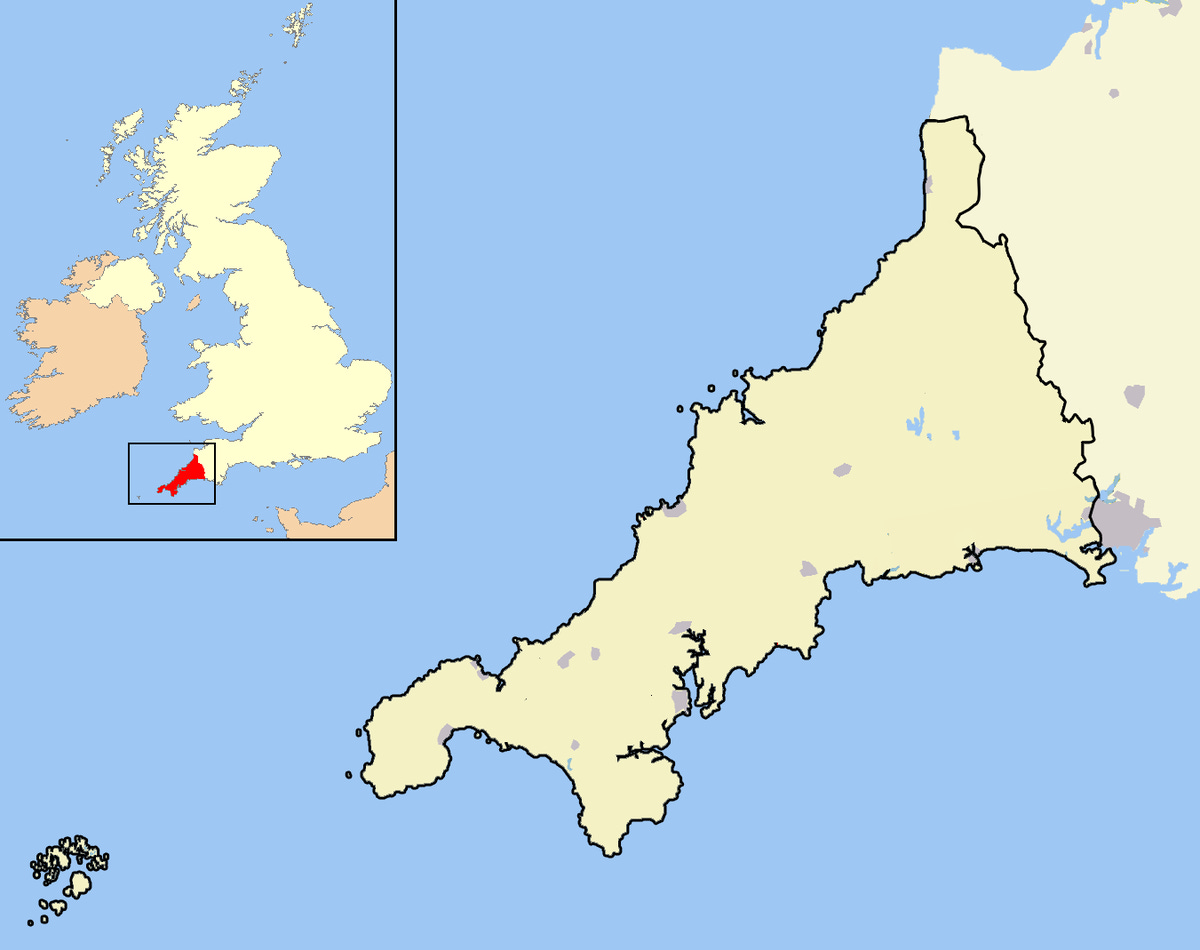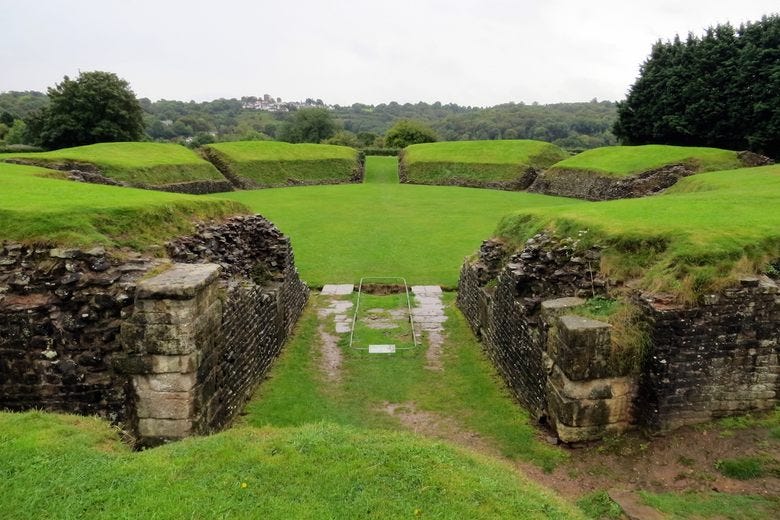Hello Dear Reader,
With this latest publication we will be taking a bit of a different route. In previous posts we have delved into people and events that have been corroborated by primary sources, secondary sources and everything in between. Today we will be delving into a figure of Celtic legend. One man who has become one of the most well known kings of ancient Wales and all of ancient Britain. He was a legendary figure of resistance to Saxon aggression and a figure of national pride to many to this day. He was a chivalrous man who was friends with a wizard, led a band of knights, and whose love for his woman was second to none. So come, dear reader, take a seat around my fire and let’s begin. Today we will hear the tale of King Arthur and his Knights of the Round Table.
Clarification
Dear reader, I shall not give you much into the realm of context, as I would like the story to speak for itself, but I will give you some necessary information regarding the sources. From what we know about the Tale of King Arthur comes from a variety of sources but mainly a book called the Matter of Britain, a Welsh poem named Y Gododdin, and in a book written by Nennius, in 830 AD, named ‘History of the Britons’ .
Now we come to our main problem: these were all written at different times so it is hard to corroborate what they all say. Our second large problem in proving Arthur’s existence is that it took place during a time of great struggle in Britain. This great struggle had many different players which, at a time which information proved to move slowly, can lead to confusion.
I have more to tell at the end but first let me give you our Tale of King Arthur.
The Tale of King Arthur
To begin, Arthur's birth was shrouded in mystery and had many elements of intrigue. According to some versions of the legend, he was conceived through the sorcery of Merlin, who transformed Uther Pendragon to resemble Igraine's husband, Duke Gorlois of Cornwall, thus allowing Uther to spend a night with her. From this “union,” Arthur was born, destined for greatness from the moment of his birth.
As a child, Arthur was raised in obscurity, totally unaware of his royal lineage. It wasn't until he was a young man that his true identity was revealed, thanks to the intervention of Merlin. The wizard orchestrated the famous Sword in the Stone test, in which only the rightful heir to the throne could pull the enchanted sword, Excalibur, from its resting place. Arthur, unaware of what he would become, pulled the sword from the stone, signaling his destiny as the future king of Britain.
With Excalibur in hand, Arthur assumed his rightful place as king and established Camelot as his seat of power. Under his rule, Camelot became a beacon of hope and civilization in a land so ravaged by war and chaos. The Knights of the Round Table, Arthur's loyal companions, swore oaths of fealty and embarked on countless quests and adventures in the service of their king and kingdom.
Among the most famous of these quests was the search for the Holy Grail, the sacred vessel said to contain the Blood of Christ. Led by Galahad, the purest of knights, the quest for the Grail tested the virtues of Arthur's knights and revealed the depths of their faith and devotion.
However, Camelot's golden age was not without its challenges. Arthur's half-sister, Morgan le Fay, and her son Mordred, conspired against him, seeking to undermine his rule and seize power for themselves. An affair between Queen Guinevere and Sir Lancelot further complicated matters, leading to internal strife and discord within Camelot's walls.
Despite these trials, Arthur remained a man of virtue and honor, leading his knights in battles against invading forces and championing justice and righteousness throughout the land. But it would be in the final battle at Camlann that Arthur would face his greatest challenge, as he confronted Mordred in a struggle that would determine the fate of Britain.
The Battle of Camlann was a brutal and bloody affair, with both sides suffering heavy losses. In the midst of the chaos, Arthur and Mordred met in single combat, their swords clashing in a frenzy of steel and fury. In the end, Arthur emerged victorious, but at a great cost. Mortally wounded, he entrusted Excalibur to his loyal knight, Sir Bedivere, instructing him to return the sword to the Lady of the Lake.
With his dying breath, Arthur bade farewell to his loyal companions and was carried away to Avalon, the mystical island of healing and rest. There, it is said, he would await the time of Britain's greatest need, when he would rise again to defend his kingdom against its enemies.
Was He Real?
Well, probably not but he was most likely based on some leader that existed during the end of Antiquity in Britain.
In all speculation, Arthur was most likely based on a Celtic chieftain who fought against the Anglo-Saxon invasion of England during the Fifth Century. However, there are also sources who say that Arthur was a Roman who stayed in Britain after the Romans left. Gildas, who is our scholarly source at the time, says that Ambrosius Aurelianus was a Roman that arose to lead Britain against the Anglo-Saxons at a time of national crisis.
In fact, he may have led an army of Britons against the Anglo-Saxons in a great pitched-battle in which the Britons were victorious. Welsh sources say that whoever led the forces of the Britons in that battle was Arthur. However, the details we have surrounding this conflict were not written down until many hundreds of years after this battle so we cannot know for sure.
What is of worth to note is that there are some places around Britain, which are mentioned in the story, that are real or can be potentially pointed to. For example, Cornwall, in the very south of Britain, is a very real place. The people of Cornwall are called the Cornish and who, up until very recently, had their own language and Celtic culture. In fact, they were considered a separate people entirely from their English neighbors. As the Anglo-Saxons came across the island, they would eventually create the Kingdom of Wessex which would border Cornwall, which is seen in the picture below.
Arthur’s Camelot is another interesting point to note. For many years, it was considered to be a place in Southern Wales named Caerleon. What is interesting about Caerleon is that it is the site of an ancient Roman fortress in the area. This may give more credit to the theory that King Arthur was a Roman who potentially stayed behind.
However, it can also give credit to Arthur being a Celtic chieftain. As the Anglo-Saxons came to Britain, the Celts, who would have known the fortress was there, could have taken up residence in the Roman fortress to defend their island from these new invaders. What is even more interesting is that Caerleon, seen above, is round, which many give some credit to the “Knights of the Round Table.”
In conclusion, as the Celts continued to fight for the Island, the legend of King Arthur was most likely based on a leader from the time (or perhaps made up entirely) to help those Celtic people, who were resisting the invasion, have a source of strength to point to. In turn, this would help preserve their ancient culture and way of life.
Why Does This Matter?
Well, dear reader, King Arthur helps give us some context of the time. More than anything, it helps give us a feeling as to how the Celts felt immediately after the Anglo-Saxon invasion of England. The Celts would, for many hundreds of years, continue to resist the might of the Anglo-Saxons and the Tale of King Arthur helped keep that spirit of resistance alive. I would hazard or at least venture to say that those feelings still remain true today with nationalist or republican movements of the native Celts of Ireland, Wales, and Scotland. A source of strength in dark times can keep people going more than anything.
Well, dear reader, it seems that the sun sets on Camelot, which humbly awaits the return of its king. I would like you to know how much I enjoyed our time together and was quite happy that I was able to lead you through our journey of the Tale of King Arthur. Join me around my fire next time, where we will delve into the beliefs of a people that would establish an empire.
- Flint

